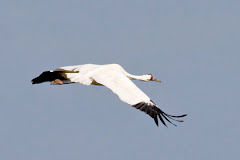This past Saturday morning, we had the privilege of participating in an "All About Owls Program" at Wild Birds Unlimited in Wausau. We discussed the amazing adaptations of owls, and all of the visitors got to dissect owl pellets! It was a blast! It seemed like the kids (and even the adults) really enjoyed finding all of the bones!
If you aren't aware of what an owl pellet is, it is a packet of undigested material that an owl coughs up. Owls and other raptors frequently swallow their food whole, ingesting fur and bones along with the meat. Owl stomachs impressively take out all of the digestible material and pack the fur and bones into a neat little packet. This process takes a little while, and usually about 6 to 12 hours after eating, the owl coughs up the pellet. An owl must regurgitate the pellet before eating the next meal, because the pellet blocks the digestive system for a little while.
People can dissect these pellets and identify the prey species of owls in the wild by examining the bones found inside! A lot has been learned about the eating habits of owls by studying their pellets. At REGI, we save the pellets that our education owls regurgitate, bake them to kill any "bugs" and wrap them in tin foil for schools to purchase. We brought a bunch of pellets along with us to the program, and the visitors were able to find out for themselves just how cool this can be!
Enjoy the series of photos I have below!
As you can tell, we had a very fun and unconventional Saturday morning! We would like to thank everyone at Wild Birds Unlimited for inviting us to this wonderful event and all of the visitors for attending!
I hope you all have a great week! Thanks everyone!
Karissa Mohr
Wildlife Educator











